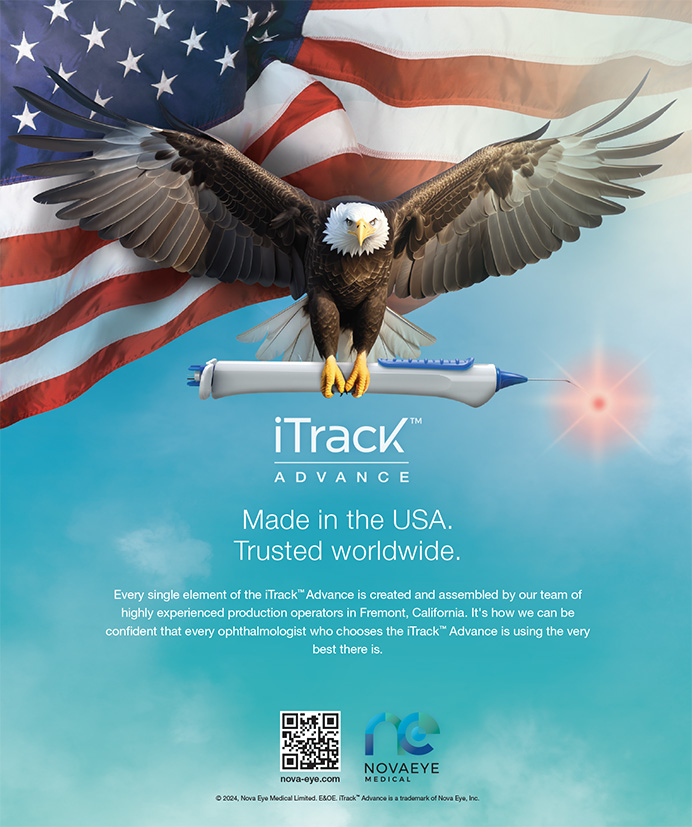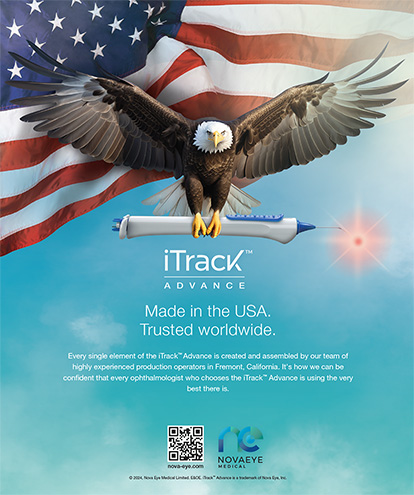Although the incidence of postoperative ectasia should decrease concurrently with the increased use of femtosecond lasers for creating the LASIK flap, these two occurrences are likely only minimally related to one another. Surgeons' belief that laser flaps significantly reduce the incidence of ectasia could actually result in higher rates of the complication if they become less vigilant in their LASIK screenings.
DEBATE ABOUT THICK FLAPS
Since the first reports of ectasia after LASIK in 1998,1,2 thick flaps were hypothesized to be a source of excessive biomechanical weakening. However, multiple casecontrolled studies found topographic patterns to be a much more significant risk factor, with limited data supporting the theory that thick flaps were a major contributor to the development of ectasia.3-5 These studies, and the resulting ectasia risk scoring system, have been criticized for not having data available on the flap's actual thickness due to their retrospective nature. However, in a recent study by Binder and Trattler in which they measured the flap's thickness in all cases,6 the researchers reported the same incidence of ectasia (0.17%) as in previous studies (not related to thick flaps) and the same screening sensitivity and specificity as in our work.3,4 Binder and Trattler's data set included six microkeratomes and one femtosecond laser. Of the 1,705 eyes evaluated, none of the flaps measured greater than 200 μm.
The incidence of ectasia peaked around 2000 to 2001 and has slowly declined since. This decrease appears to be directly attributable to surgeons' improved use of screening techniques for detecting corneal biomechanical abnormalities with careful topographic analysis. During the period when the incidence of ectasia decreased, most LASIK surgeons continued to use the Hansatome microkeratome (Bausch + Lomb) until 2009, when femtosecond lasers were first used by more than 50% of surgeons surveyed. 7 The Hansatome microkeratome historically creates thicker flaps with greater variability than other devices, yet the incidence of ectasia still decreased.8 Furthermore, whereas thicker-than-anticipated flaps have been tied to some cases of ectasia, in a large case series of eyes that developed the complication after LASIK, those eyes had flaps with similar thickness profiles (mean, range, and standard deviation) compared with contemporary nonectatic flaps, suggesting that excessively thick flaps have only rarely caused ectasia.9
ADVANTAGE OF THIN FLAPS
In vitro studies have demonstrated that human corneas have a depth-dependent cohesive tensile strength, which is greatest in the anterior 40% of the cornea and decreases relatively linearly from the Bowman layer through the deep stroma.10 This finding suggests that thin flaps, created by femtosecond lasers and modern mechanical microkeratomes, should have an advantage over thick flaps in terms of biomechanical integrity. Both femtosecond laser platforms and modern microkeratomes are able to create thin planar flaps in a highly reproducible fashion.11-15 Thus, to whatever extent thin flaps protect against ectatic development, both techniques should provide the same benefit. The LASIK scar is also biomechanically weaker in tensile cohesive strength than normal corneal stroma, with no differences between flaps created with a laser or microkeratome.16
DILIGENT SCREENING
The incidence of ectasia should continue to decrease, as surgeons become more aware of topographic patterns that indicate an increased chance of the complication and use more extensive screening algorithms and technologies to exclude corneas at risk. The advent of femtosecond lasers should facilitate this decrease by creating reproducibly thin planar flaps. However, these flaps are not overly protective from developing the condition, and diligent screening remains crucial to preventing future cases of ectasia.
Rupa D. Shah, MD, is an assistant professor of ophthalmology at Case Western Reserve University and a practitioner at MetroHealth Medical Center in Cleveland, Ohio. She acknowledged no financial interest in the products or companies mentioned herein. Dr. Shah may be reached at (216) 778-2236; rshah2@metrohealth.org.
J. Bradley Randleman, MD, is an associate professor of ophthalmology at Emory Eye Center in Atlanta. He acknowledged no financial interest in the products or companies mentioned herein. Dr. Randleman may be reached at (404) 778-2264; jrandle@emory.edu.
- Seiler T, Koufala K, Richter G. Iatrogenic keratectasia after laser in situ keratomileusis. J Refract Surg. 1998;14(3):312- 317.
- Seiler T, Quurke AW. Iatrogenic keratectasia after LASIK in a case of forme fruste keratoconus. J Cataract Refract Surg. 1998;24(7):1007-1009.
- Randleman JB, Woodward M, Lynn MJ, et al. Risk assessment for ectasia after corneal refractive surgery. Ophthalmology. 2008;115(1):37-50.
- Randleman JB, Trattler WB, Stulting RD. Validation of the Ectasia Risk Score System for preoperative laser in situ keratomileusis screening. Am J Ophthalmol. 2008;145(5):813-818.
- Randleman JB, Russell B, Ward MA, et al. Risk factors and prognosis for corneal ectasia after LASIK. Ophthalmology. 2003;110(2):267-275.
- Binder PS, Trattler WB. Evaluation of a risk factor scoring system for corneal ectasia after LASIK in eyes with normal topography. J Refract Surg. 2010;26(4):241-250.
- Duffey RJ, Leaming D. US Trends in Refractive Surgery. http://www.duffeylaser.com/physicians_resources.php. Accessed February 8, 2012.
- Yildirim R, Aras C, Ozdamar A, et al. Reproducibility of corneal flap thickness in laser in situ keratomileusis using the Hansatome microkeratome. J Cataract Refract Surg. 200;26(12):1729-1732.
- Randleman JB, Hebson CB, Larson PM. Flap thickness in eyes with ectasia after LASIK. J Cat Refract Surg. In press.
- Randleman JB, Dawson DG, Grossniklaus HE, et al. Depth-dependent cohesive tensile strength in human donor corneas: implications for refractive surgery. J Refract Surg. 2008;24(1):85-89.
- Rocha K, Randleman JB, Stulting RD. Analysis of microkeratome thin flap architecture using Fourier-domain optical coherence tomography. J Refract Surg. 2011;27(10):759-763.
- Alió JL, Piñero DP. Very high-frequency digital ultrasound measurement of the LASIK flap thickness profile using the IntraLase femtosecond laser and M2 and Carriazo-Pendular microkeratomes. J Refract Surg. 2008;24(1):12-23.
- Stahl JE, Durrie DS, Schwendeman FJ, et al. Anterior segment OCT analysis of thin IntraLase femtosecond flaps. J Refract Surg. 2007;23(6):555-558.
- Kymionis GD, Portaliou DM, Tsiklis NS, et al. Thin LASIK flap creation using the Schwind Carriazo-Pendular microkeratome. J Refract Surg. 2009;25(1):33-36.
- Reinstein DZ, Archer TJ, Gobbe M, et al. Accuracy and reproducibility of Artemis central flap thickness and visual outcomes of LASIK with the Carl Zeiss Meditec VisuMax femtosecond laser and MEL 80 excimer laser platforms. J Refract Surg. 2010;26(2):107-119.
- Dawson DG, Kramer TR, Grossniklaus HE, et al. Histologic, ultrastructural, and immunofluorescent evaluation of human laser-assisted in situ keratomileusis corneal wounds. Arch Ophthalmol. 2005;123(6):741-756.


